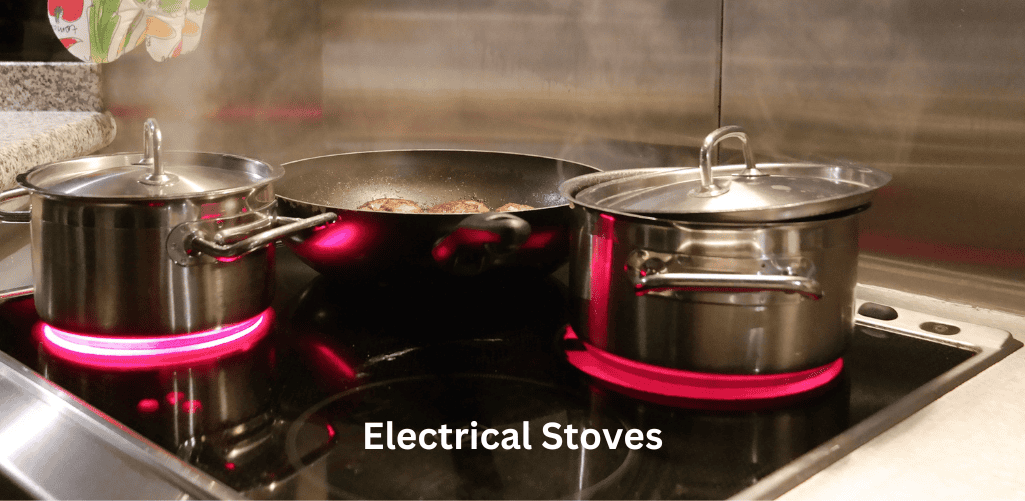
The invention of the electric cooker has changed the face of contemporary cooking, impacting both home and commercial kitchens. We learn how electrical stoves have grown necessary in modern kitchens as we explore their world, paying special attention to cutting-edge options like the 2200W 110V Electric Cooktop with twin burners. These gadgets are great for a variety of kitchen tasks because they are safe, efficient, and precise. Modern electric stoves are the pinnacle of technological innovation and functional design, with features like adjustable power levels, child safety locks, and integrated timers. Whether you’re a professional chef or just someone who loves to cook at home, knowing what features and benefits an electrical cooker has is important for selecting a good purchase.
Historical Evolution of Electrical Stoves
Early Development
First electric stove invented in 1892 by William Hadaway
Initial challenges with electrical infrastructure
Evolution from basic heating elements to sophisticated controls
Technological Advancements
Introduction of temperature controls in the 1930s
Development of smooth-top surfaces in the 1970s
Integration of digital controls and safety features
Modern Electric Cooktop Features
Basic Components
Heating elements (coil or smooth-top)
Control panel with temperature settings
Power distribution system
Safety mechanisms
Advanced Features
Digital temperature control
Multiple power settings (9 levels in this model)
Timer functionality
Child safety lock
Dual handles for improved portability
Automatic shut-off protection
Technical Specifications
Power and Voltage
2200W power output
110V compatibility
Energy efficiency ratings
Power distribution between burners
Physical Dimensions
Compact design for versatility
Dual burner configuration
Heat-resistant construction materials
Portable form factor
Safety Features
Child Protection
Integrated safety lock system
Cool-touch surfaces
Automatic shut-off mechanisms
Temperature limiting controls
Operating Safety
Overheat protection
Power surge protection
Indicator lights
Emergency shut-off features
Electrical Stoves
- 9 power settings for accurate cooking
- Quick temperature adjustments
- Automatic shut-off
- Cool-touch surfaces
- Portable design with handles
- Multiple cooking zones
- Energy-saving features
- Precise power control
- Various pot and pan compatibility
- Different temperature settings

- Needs dedicated electrical circuit
- May require professional installation
- Potential electrical upgrades needed
- New safety procedures to learn
- No cooking during power outages
- Requires stable power supply
Installation and Setup
Electrical Requirements
Dedicated circuit needs
Proper grounding
Voltage compatibility
Circuit breaker specifications
Placement Considerations
Ventilation requirements
Counter space needs
Clearance specifications
Safety distances
Maintenance and Care
Daily Cleaning
Surface cleaning procedures
Spill management
Recommended cleaning products
Prevention of buildup
Long-term Maintenance
Regular inspection points
Component checking
Professional service schedule
Troubleshooting guide
Cooking Performance
Heat Distribution
Even cooking surface
Multiple temperature zones
Heat retention capabilities
Temperature consistency
Cooking Versatility
Different cooking methods
Pan compatibility
Temperature range
Cooking zone flexibility
Energy Efficiency
Power Consumption
Energy usage patterns
Efficiency ratings
Cost comparison with other methods
Power-saving features
Environmental Impact
Carbon footprint
Energy conservation
Sustainable materials
Environmental certifications
Comparison with Other Cooking Methods
Gas Stoves
Heat control differences
Cost comparison
Safety considerations
Installation requirements
Induction Cooktops
Technology differences
Efficiency comparison
Cost analysis
Cooking performance
Best Practices for Usage
Optimal Performance Tips
Proper pot and pan selection
Temperature management
Energy-saving techniques
Safety procedures
Common Mistakes to Avoid
Overloading circuits
Improper cleaning methods
Safety oversights
Operation errors
Frequently Asked Questions
How long does it take for the cooktop to heat up?
The electric cooktop normally achieves full temperature within 1-3 minutes, depending on the power setting used.
Will this electric cooktop work with any kind of cookware?
Most regular cookware is compatible, however flat-bottomed pans work best for efficient heat transfer.
What safety features are included?
The unit incorporates a child safety lock, automatic shut-off, overheat protection, and indicator lights.
How do I clean the stove surface?
Clean with a delicate cloth and mild cleaner when cool, avoiding harsh products that could scratch the surface.
What is the power consumption?
The machine operates at 2200W maximum power, with variable consumption dependent on specified power levels.
Conclusion
The electric cooktop, particularly the 2200W 110V model with dual burners, represents a significant advancement in home cooking technology. With its combination of safety features, precise temperature control, and energy efficiency, it offers an excellent solution for modern kitchens. The inclusion of features like child safety locks, multiple power settings, and timer functions makes it both practical and user-friendly. While there are some considerations regarding power requirements and initial costs, the benefits of consistent cooking performance, safety, and convenience make it a worthy investment for any home cook or professional chef. As we continue to embrace energy-efficient and safer cooking methods, electric cooktops like this model stand as a testament to the evolution of kitchen technology.